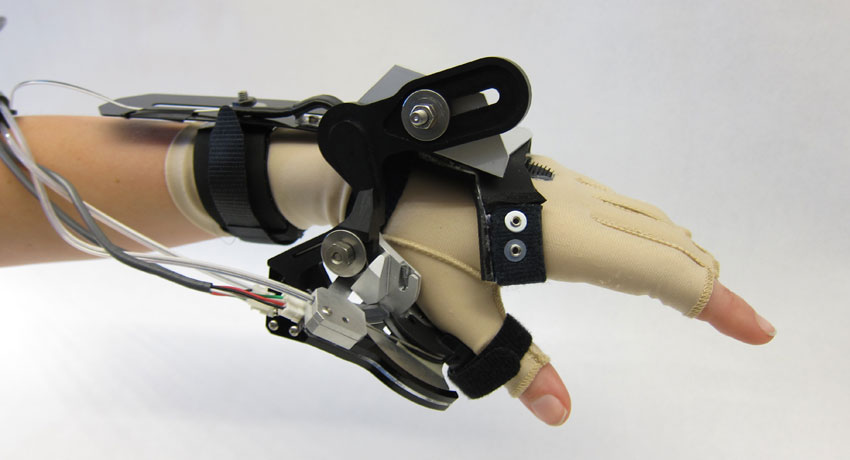Boston Children’s Develops Robot Hand Device

IOTA image provided by the Wyss Institute
Opposable thumbs are vital to our daily lives. They allow us to hold objects, open doors, write, eat, and text. But for some children who have suffered strokes, or have been diagnosed with cerebral palsy or hemiplegia—paralysis on one side of the body—thumbs don’t help them accomplish these tasks. Doctors at Boston Children’s Hospital, in collaboration with the Wyss Institute for Biologically Inspired Engineering, have developed a device that will help these patients regain their thumb movements: a robot hand device.
The device, called the Isolated Orthosis for Thumb Action or IOTA, is a small robotic device that fits over the child’s hand and has motors—called actuators—placed at the thumb joints. Sensors detect attempted thumb and wrist movements and relay this information to a small computer in a tiny portable control box which then helps the child complete the motion. The IOTA is also small enough to allow the palm to stay open, which allows children to grasp objects more freely.
Previous devices have attempted to assist movement in the whole hand but the IOTA focuses solely on thumb movement. This unique focus on the thumb was the brainchild of Dr. Leia Stirling, a Visiting Scholar at the Wyss Institute and an Assistant Professor at MIT, and Annette Correia, an occupational therapist from Boston Children’s Hospital.
Combined with standard occupational therapy techniques, Stirling, Correia, and Hani Sallumm—and electromechanical engineer at the Wyss Institute—hope that the IOTA will help children build up enough strength and dexterity to use their thumb unassisted. A clinical trial is currently underway that will examine 15 Boston Children’s Hospital patients who will use the device both in the hospital and at home for six weeks.
The design currently fits patients ages 6 to 16, but Correia says that she hopes a smaller version of the device will be developed in the near future that will fit younger patients as well. “Even when devices are made for the pediatric population, they are often made for older teenagers and are created by simply making an adult device smaller,” Correia said in a report. “What’s exciting is that we had the opportunity to make a device specifically for children that is consistent with their developmental needs.”


